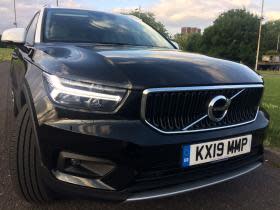Car review: Volvo XC90 (2020) – far too well-built for its own good
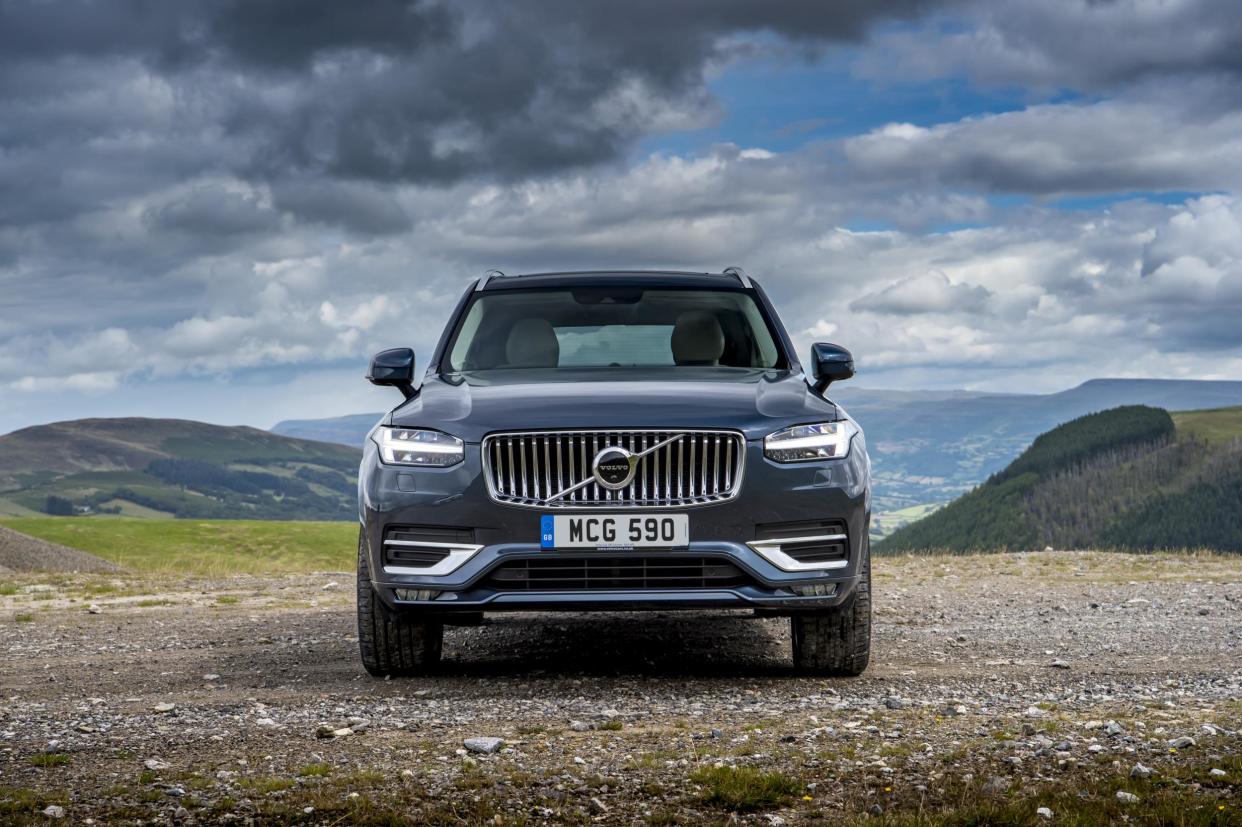
Do you ever wonder what the fate of the nation’s vast fleet of four-wheel drive SUVs might be?
I mean, over the past decade or more, hundreds of thousands of these well-engineered, if not over-engineered, vehicles have been purchased, and few have had their wheels muddied in all that time. The differential locks, the highly articulated suspension, the clever electronic hill descent control – all entirely unused, but lugged around needlessly to the detriment of fuel economy and emissions alike. Lugged around, too, by understressed big turbo-diesel engines ordinarily capable of mileages well into six figures.
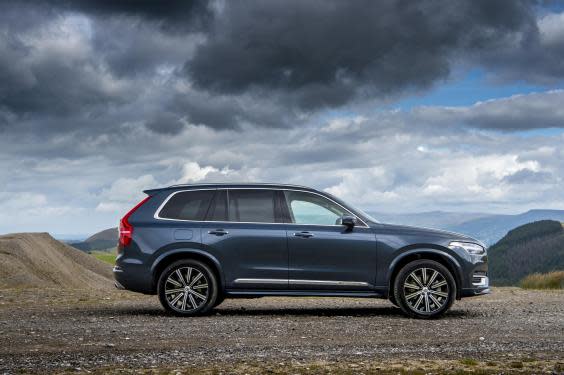
In a decade or two these cars, with their galvanised bodywork and tough mechanicals, should still be around and giving good service, but of course they won’t. The backlash on diesel, arbitrary official targets about the internal combustion engine and our throwaway consumer society will see to that.
Read more
Car Review: Volvo XC40 D3 – it’s all there in black and white
Our great car companies are busily designing and building vehicles designed to stand the test of time, and last for many, many years. Yet soon they will all be technically and economically obsolete. So most of these cars will be scrapped long before they are worn out. Some of these cars will be discarded long before their time just because they can’t drive themselves.
Cars, in fact, very much like the Volvo XC90, which has been given a mild mid-life “facelift” and some important technical improvements. Though discernible only to the most hardcore of Volvo fans, they’ve put some new bumpers and lights on it, and some of the versions get a chrome strip at the back. It’s quite a handsome beast anyway, in a Volvo sort of way, so that doesn’t matter so much. It’s very on-brand as things stand, which I suspect is where its clientele like it to be. The interior, too, which is modern and stylish, is pretty much unmolested.
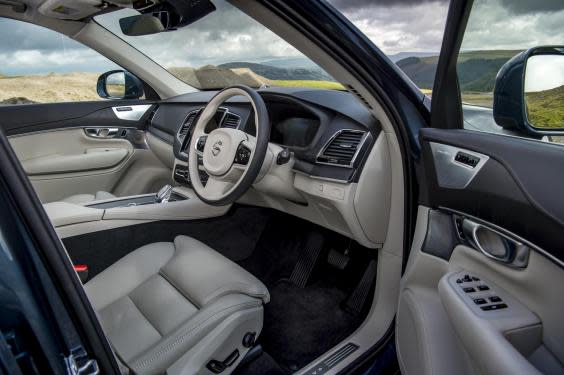
There are seven seats inside that incredible bulk, as ever, and a vertical, portrait-format 9-inch touchscreen that controls the air con, satnav, driver info and all the rest. The cabin is comfortable and contemporary in style, if not quite as trendy and Ikea-like as its little sibling, the XC40. As per best current automotive practice, key buttons for the audio and cruise control are within thumb-reach on the steering wheel. The ergonomics are excellent, and needed no great attention anyway.
The spec
Volvo XC90 B5 diesel (mild hybrid)
Price: £59,360 (as tested, range starts at £52,235)
Engine capacity: 2.0 litre diesel; eight-speed automatic + 48 kw starter generator
Power output (hp@rpm): 235@4,000
Top speed (mph): 137
0 to 60 (seconds): 7.1
Fuel economy (WLTP): 37.7
CO2 emissions (g/km): 154
Where Volvo has had to move along, though, because of ever tighter emission rules and public pressure, is in making this heavy machine a bit more green and a bit easier on the pocket. Thus, as with the entire Volvo range now, there is a “mild hybrid” option, a small electric motor plus battery pack that helps edge fuel consumption and emissions down, and makes for a slightly more refined drive. The hybrid technology harvests energy otherwise wasted, eg in engine braking, but it’s a fairly modest exercise. This variant of the XC90, the B5 Diesel with the additional 48-volt hybrid power boost, won’t run very far on pure electric power. (A mild hybrid petrol version will be along later.) For the consumer the mild hybrid’s principal benefits are smoother, seamless standing starts, as well as lower fuel bills.
The existing, full-hybrid power XC90, known as the T8, however, will go some distance on pure electric power because it has a much larger battery pack, now expanded still further. The so-called “Twin Engine” T8 models (petrol engine plus electric motor) will now enjoy a maximum range of about 29 miles, up from 22 miles. It’s pretty paltry compared to, say, the 250 miles you’ll extract from an all-electric Jaguar iPace, but it is competitive with the market-leading Mitsubishi Outlander plug-in hybrid, and sufficient for most commutes.
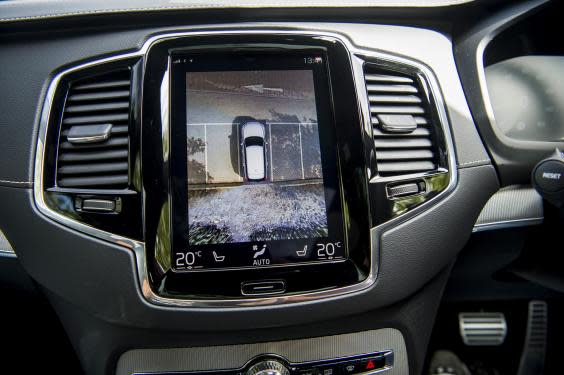
The new XC90 range is available in the usual Volvo trim levels of Momentum, RDesign (the sporty looking one), and Inscription versions, and each is also available in even more highly specified “Pro” form. In all, there are four powertrains: the new 235hp B5 mild hybrid diesel; the 250hp T5 and 310hp T6 pure petrols (smooth but thirstier); and the 390hp T8 Twin Engine petrol electric plugin hybrid. Every XC90 comes with an excellent eight-speed automatic transmission and all-wheel drive (whether you need it or not). The only thing you can’t have is an all-electric version.
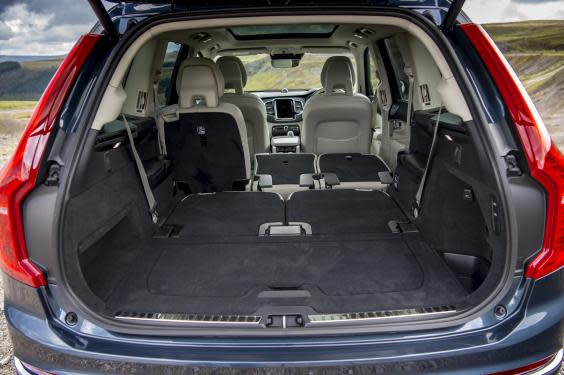
So the Volvo XC90 is the very exemplar of a full-size (at least by European standards), go-anywhere, four-wheel drive SUV that I fret about. In the old days people who drove Volvos were proud of the fact that they would buy one and then keep it for 10 or 20 years, secure in the knowledge that, with a few exceptions, it wouldn’t rust away or otherwise expire before its natural lifespan. The very longevity of the Volvo was a powerful marketing tool.

Now, not so much, now least because the prevalence of PCP and other leasing type finance plans encourage us, were any further incentives required, to chop and change our cars in every three years or so. Plus the pace of technological change – connectivity, increasing autonomy, emission targets – add to the pressure to do so.
In other words, no one is going to buy an XC90 “for life” and precious few will push one to the limits of its abilities. What a waste.
Read more
Read more Car Review: Volvo XC40 D3 – it’s all there in black and white

 Yahoo News
Yahoo News 